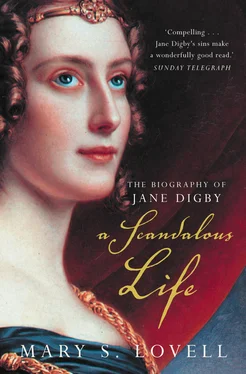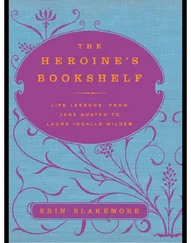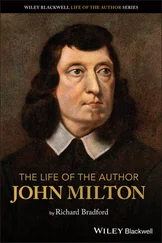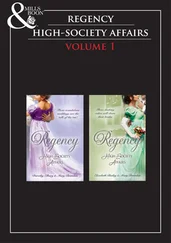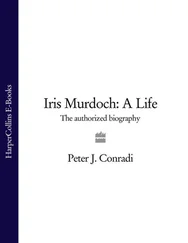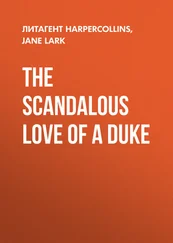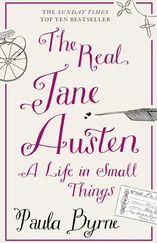The same paper continued the attack a week later, referring also to an alleged relationship with another young woman, which led to a ‘ recontre in Portland Place and even to a personal conflict’ between Ellenborough and a young doctor. 7
Ellenborough loftily ignored the press, and so apparently did his peers, for after a third reading in the week of Jane’s twenty-third birthday, on 7 April, the bill was passed. Royal Assent was duly granted and the Clerk of the House gravely announced, in time-honoured fashion, ‘ Soit fait comme il est désiré. ’ 8 The Times , seeing the end of its best lead story since the King’s attempt to brand Queen Caroline an adulteress in order to divorce her, contented itself with a huffy statement:
As we hinted yesterday, such a result was all but inevitable; seeing in the first place that the chief opponent of the bill proceeded on the absurd ground that adultery was not proved, and secondly that nobody had the courage to take the true ground – the alleged conduct of Lord Ellenborough with respect to other women. 9
There was a beneficiary of the publicity surrounding the Ellenborough divorce case. Advertised in The Times , as often as not alongside the daily reports of the hearings, was ‘A Satirical Novel of Fashionable Life’, entitled The Exclusives. The publisher’s blurb proclaimed: ‘This extraordinary production continues to be the leading topic of conversation among the higher circles. The astonishment felt at the details connected with a certain system of London Society is indescribable.’ 10 Although appearing under the shelter of anonymity this book was written by a lady-in-waiting to Queen Adelaide, and the leading character was unmistakably Lady Ellenborough. Just to ensure that her readers were not left wondering, the author boldly plagiarised the name ‘Lady Glenmore’, the same name as that used for the character based on Jane in Almack’s. The Exclusives ran to three editions in a month while the hearings lasted, and the publishers could not keep it in print. Covering the period 1827–8 the story told how Lord Glenmore, a Minister of the Crown, was cuckolded by a man bearing a remarkable resemblance to Colonel George Anson. It was the second of eight novels that would be written, during Jane’s lifetime, using her character or story.
Given the weight of evidence against Jane – publicly self-admitted, one might say, through Miss Steele – one might have expected some sympathy for Ellenborough. After all, he was the proven injured party and had recently been bereaved of his only son and heir. However, virtually no one believed that he had not behaved badly himself on the two counts of adulterous behaviour and neglect of Jane.
There is no doubt from the surviving evidence that an agreement was reached between Admiral Digby and Lord Ellenborough, which appears to be that, in return for Jane’s matrimonial freedom and a financial settlement, no defence evidence would be offered. However, if blame must be apportioned for what happened to the Ellenborough marriage, and despite the decision of Parliament, it was clearly not one-sided. Jane was guilty of adultery, on two previous occasions as well as her affair with Schwarzenberg, but it was well known in their circles that Ellenborough was as guilty as Jane of marital infidelity. At that time, however, it was not possible for a woman to divorce a man on the grounds of his adultery.
Ellenborough’s relationship with the Countess St Antonio terminated abruptly, and the Princesses Lieven and Esterhazy’s activities were sharply curtailed by their respective husbands after The Times hinted broadly that they were the undesirable persons to whom Margaret Steele had alluded. Lady Holland, at whose home all those most involved had often met, openly stated that Jane had been corrupted by the Esterhazys. Count Apponyi claims that Prince Esterhazy locked his wife in her bedchamber for a week 11 and, according to Lord Clare, he ‘threatened her with divorce if she did not mend her ways’. In the same letter, Clare touched on the current widespread rumour that Ellenborough was to marry Clare’s sister Isabella. This ‘absurd story’ was swiftly denied: ‘You who know her will acquit her of the indelicacy of forming an engagement with a married man. But in truth the [two] parties, which by the way have not met for more than a year, have not and never have had any thought of being mated.’ 12
In fact, Ellenborough was never to marry again. After a brilliant career during which he became a highly successful Governor-General of India, he died without a legitimate son to inherit his title, which then passed to another branch of his family. He was never socially ostracised as Jane was, but, though his career was never affected by the divorce, few decent families were prepared to risk a daughter to the dubious protection of a man over whose reputation so many questions hung. Instead, as the years passed, Edward lived with several mistresses (not of his own class), by whom he had a number of children, one of whom is said to have been Madame Hamilton, the ‘petite Mouche Blanche’ of King Victor Emmanuel of Italy. 13
Although Lord Ellenborough subsequently had two natural sons, he left a large part of his fortune to his two natural daughters, apparently much loved, who lived with him at his Gloucestershire estate, called Elm Grove, like his house at Roehampton. His daughters were raised and educated as ladies. 14 At the chapel on the estate he erected a beautiful monument to his first wife Octavia. A brief note in his will acknowledges: ‘Jane Elizabeth Digby and her assigns may receive yearly [the sum of] £360 clear of tax or duty … in satisfaction of a bond executed by me to the said Jane Elizabeth Digby … during her lifetime … on the first of April and eighth of October in every year … as shall happen after my death if the said Jane Elizabeth Digby shall by then be living.’ 15 Apart from this, it was as though Jane had never existed.
Stories that Ellenborough had settled a large capital sum upon Jane, and that he had forced Schwarzenberg to contribute the sum of £25,000 to a trust account for Jane’s future security, were widely circulated, even finding their way into respected reference books such as The Complete Peerage. It has not been possible to substantiate these rumours; however, it has been possible to confirm that, in the years that followed, Jane received monies far in advance of the annual £360 allowed by Ellenborough’s bond, and the various legacies subsequently bequeathed by her parents and grandfather. These surpluses did not emanate from future partners, for in the main they were supported by Jane. A substantial sum (which will be discussed later) was undoubtedly settled upon Jane at the time of the divorce, providing the wherewithal for her lifestyle and adventures.
During the spring and summer of 1830, when Jane’s shocked relatives were busy trying to live down her notoriety, Admiral Digby and Lord Londonderry (an emissary of Lord Ellenborough and a lifelong friend of Jane) 16 made separate abortive attempts to persuade Felix Schwarzenberg that he had an obligation to marry her. They entreated Jane to recognise ‘the necessity of steady conduct and patient forbearance’ towards the prince. This seemed especially appropriate when Jane discovered that she was again pregnant by him.
By the time she regained her marital freedom, Jane, still calling herself Madame Einberg, had found a larger apartment near the Palais-Royal in Paris. 17 Here she held her famous ‘salons’ which were, as Apponyi put it, ‘much frequented’. Her first function, referred to by Apponyi as ‘Lady Ellenborough’s Ball’, was well attended, though Apponyi stated that he was unable to dance since it was the season of Lent. 18 Despite her pseudonym it was clearly well known that she was the former Lady Ellenborough, and, glittering and entertaining as Jane’s functions were, they were noticeably not attended by the English contingent in Paris. Instead of her former connections, Jane found herself hostess to Felix’s unmarried friends, minor European royalty, and the slightly louche members of Paris’s artistic and literary society.
Читать дальше
